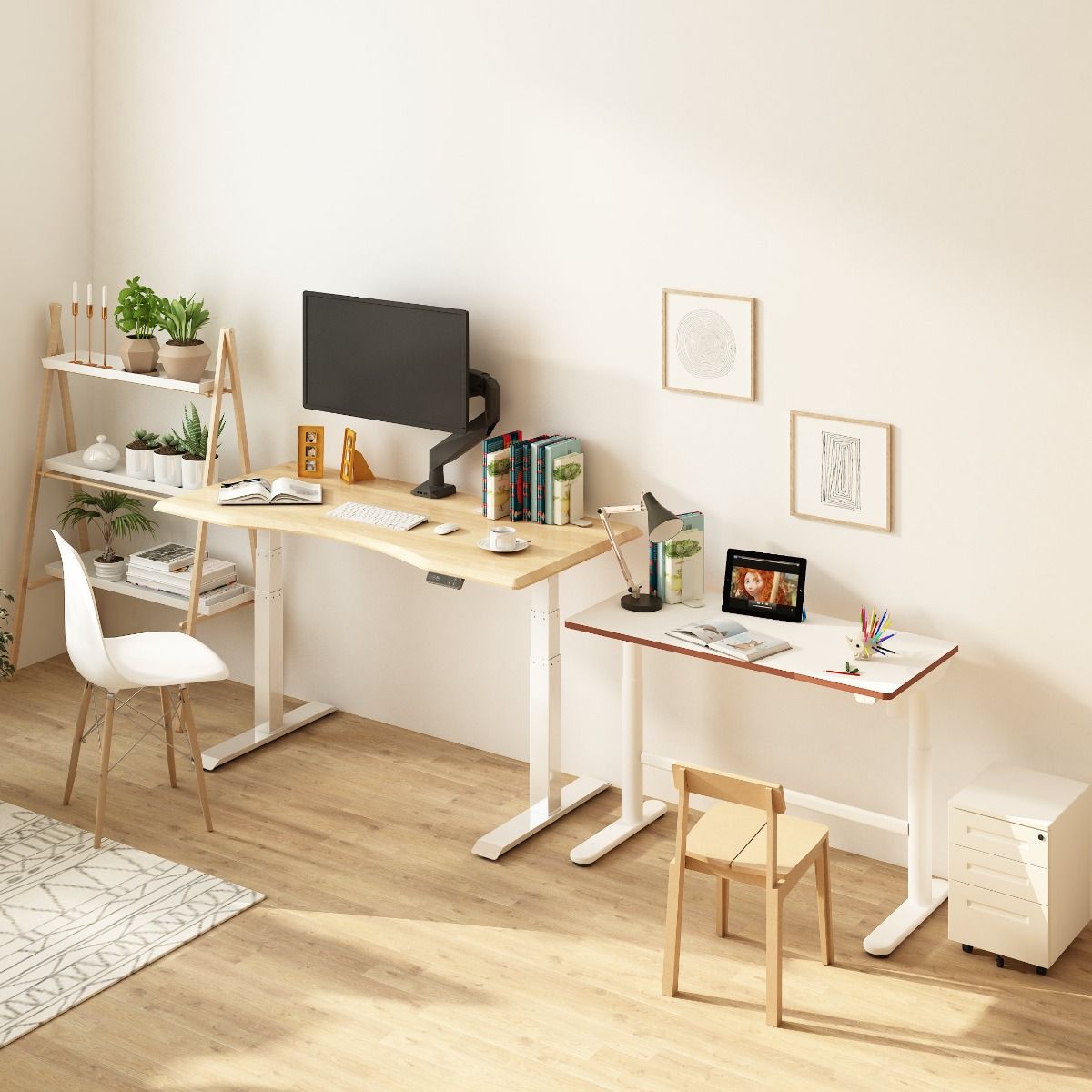Prolonged periods of sitting, poor posture and cheap office furniture can leave us struggling with niggling pain in our back. For some workers, this may develop into the painful condition, sciatica. But what is sciatica and how can you ease the pain when working in the office? In this article, we summarise some tips for treating sciatic pain at your desk.
What Is Sciatica?
Sciatica develops when the sciatic nerve (a large nerve running from your lower back, all the way to your feet) becomes irritated or compressed. Sciatic pain starts in the buttocks and continues through your hips and down your leg. As the sciatic nerve is the longest and thickest nerve in the body, the burning and shooting pain of sciatica can be intense. The pain may come and go or be continuous and is often accompanied by tingling and numbness in your leg or foot.
As prolonged periods of sitting place increased pressure on your lower back, sciatica is a common problem for people with desk jobs, particularly those who remain sedentary for most of the day. The resulting pain can be a constant source of distraction, having a massive effect on work productivity. So, how can you ease the pain of sciatica while in the office and shift your focus back onto your job?
Shift To A Standing Desk

Extended periods of sitting place unnecessary stress on the spinal discs located in your lower back. This stress can lead to compression or irritation of the sciatic nerve and the distinctive pain of sciatica. Using a standing desk can help to alleviate sciatic pain by keeping you moving throughout the day. A standing desk allows you to seamlessly transition between a seated and standing position, allowing you to remove the stress placed on your lower back. Throughout your workday, you should aim to switch intermittently between a seated and a standing position and ensure your posture remains good in both positions. With so many to choose from, investing in a good quality height adjustable desk is a good place to start when fighting the pain of sciatica.
Incorporate Exercise Into Your Day
While it may be the last thing on your mind, given the intense pain shooting down your leg, movement is one of the best solutions for alleviating the pain of sciatica. Whether you just get up and have a stroll around the office at regular intervals, or you try out some exercise moves at your desk, you should aim to stay active during your workday. You can even search the internet to find some sciatica-specific stretches to try out at your desk.
You can easily incorporate these sessions of activity into your regular work breaks. It may be useful to set a recurring alarm on your phone to remind you to get up and move every hour.
Correct Poor Posture
Many office workers spend their day either hunched over or slouching at their desks. When sitting for up to 8 hours a day this places a lot of strain on the lower back. Bad posture is a common trigger for the symptoms associated with sciatica, but it can be easily corrected with a few tweaks. When sitting at your desk, you should aim to keep both feet flat on the floor and directly below your knees. Your hips should be placed at a right angle to your knees and your shoulders should be directly above your hips. Likewise, your ears should be directly above your shoulders and your eyes should be level with your computer screen. The aim is to distribute the weight of your upper body evenly across both buttocks. Just imagine your body as a series of right angles and straight lines! To help you to achieve good posture and take pressure off the sciatic nerve, you may wish to invest in an ergonomic office chair. If your office chair has a swivel function, be sure to use it to avoid twisting and turning your upper body unnecessarily.
Use Hot/Cold Packs
A simple, quick and effective strategy for easing sciatic pain, is to apply hot/cold packs to the affected area. You may have to try both and see what works best for you. Hot packs can help to loosen up tense muscles and warm up the nerves. Cold packs relieve unwanted inflammation. It is recommended to use hot therapy before any activity to warm the muscles up, then apply cold therapy post-activity to prevent a flare-up of symptoms.
Be sure to protect the skin from damage when applying hot or cold packs and do not apply them directly to the skin.
Invest In Sciatica-Friendly Ergonomic Furniture Today
Sciatica can seriously affect your quality of life, both at work and at home. But you don’t need to live with the pain of sciatica. Flexispot is here to help you find the best ergonomic office furniture to help you avoid any more sciatica flares. Check out our collection of sciatica-friendly ergonomic chairs and height-adjustable standing desks today.